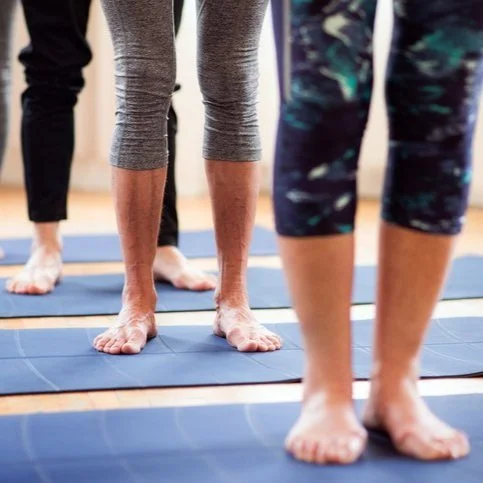
Our Treatment Model:
Whole-Body Holistic Physio & Biomechanics
The injury and the root cause
Our body is amazing. And complex. It is also good at compensating and coping, which means it can hide problems from us for a long time. Eventually however, it runs out of compensations and coping strategies and that’s when we get injured or feel pain. A common example of this is a rolled ankle which never fully recovers and stays a bit stiff. It’s not causing any pain so you figure it’s okay, but then a year later you start getting back pain because your back has actually been compensating for your ankle for 12 months. Treating the back might make you feel better in the short-term but the back pain will come back. Treating your ankle will get rid of your back pain for good.
Identifying and treating both the local cause of your pain (i.e. the muscle or tendon injury that you feel) and the root cause of the problem (i.e what your body is compensating for) creates the best environment for healing and is the key to getting you better quickly. At Move Mountains Physio, we’ve done extensive training in ConnectTherapy™ to give us the skills to do this.
What is biomechanics? Why is it important?
Just like there is way we are supposed to drive a car, there is a way the body is designed to move. This is what we call normal or ideal biomechanics. It ensures our muscles all work as a team so nothing is underworking or overworking, and it keeps our joints in safe ranges which decreases our risk of pain and injury as we move.
Most people develop good natural biomechanics as children, but trauma (injuries), inactivity, sitting in chairs, wearing stiff shoes, poor postures and bad training habits can all change our movement patterns for the worse. When we don’t move with good biomechanics, some parts of our musculoskeletal system will then be working too had, and other parts not enough increasing our risk of injury. When pain or injury occurs, treatment and rehabilitation to improve biomechanics restores good balance to our musculoskeletal system. this allows the injured tissue to heal and relieves pain quickly. In the long-term, restoring normal movement is also the key to minimising future injury.
Who Will Benefit From Holistic Physiotherapy?
Individuals who want to make a full recovery and return to activity without risk of future injury.
Individuals with chronic or persistent pain that isn’t responding to current treatment (the root cause of your injury is not being adequately treated).
Athletes or individuals with sporting injuries (the more you push your physical capacity the more important it is you restore normal biomechanics or you will find your pain continues to return).
Individuals with significant injury history (the more injuries you’ve sustained, the more important it is to understand how things have evolved in your body).
Individuals with “strange” symptoms that can’t be explained by scans or other therapists e.g. nausea, bloating, dizziness, tingling.
Individuals who rely heavily on their physical capacity for their income or enjoyment.
Individuals who want to take an active part in their recovery and get rid of their pain and physical limitations, not just manage them.
What To Expect At Move Mountains Physio:
Every treatment session is broken into 6 parts:
A thorough discussion about your injury, its impact on you, your current physical status, your lifestyle, your goals and your progress. The better we understand you and your injury the better we can plan your recovery.
A thorough whole-body, movement-based assessment to determine the injured tissue, the root cause of the injury, how it has developed in your body and how it is changing as we progress through treatment.
Education about your injury, how it has occurred, things you may be doing which could be contributing and how to make changes to your understanding and lifestyle habits to enhance your recovery.
Hands-on neuromyofascial release or dry needling as required. During online treatments we guide you through self-release techniques to produce the same effect.
Guide you through simple stretches and exercises to release tight muscles, activate weak muscles, restore better balance and movement to your body and appropriately load the injured site to stimulate healing.
Re-cap and provide you with a written plan for the week detailing the important changes you need to make, things to consider and exercises you should complete.
If you want to experience better physio, book an appointment with one of our expert physios either online or in our Jindabyne physiotherapy clinic.
Or, if you’re still not sure, book a free 15 minute consult and we can discuss your injury and exactly how our unique treatment model can help you.


